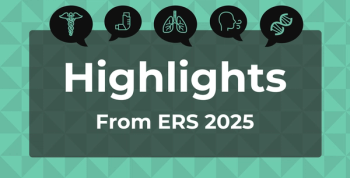
Treating iCCA With Chemo Pump Can Be as Effective as Surgery, JAMA Study Finds
Cholangiocarcinoma (CCA), or bile duct cancer, is classified by its location, with intrahepatic CCA (iCCA) referring to those cancers that form in bile ducts within the liver.
With cases of
CCA, or bile duct cancer, is classified by its location, with intrahepatic CCA (iCCA) referring to cancers that form in bile ducts within the liver. These tumors can be especially hard to treat with surgery, in part because of the difficulty achieving clean margins. Thus, researchers have examined other ways to treat these tumors. In addition, patients with iCCA may have multiple tumors at diagnosis, which complicates surgery.
For these reasons, results from a long-term international investigation published today in JAMA Surgery show that surgery may not always be the best choice for these patients. Instead, use of an arterial pump to feed high-dose chemotherapy directly into the liver may offer survival benefits on par with resection, without the complications of surgery. The favored chemotherapy is floxuridine, according to the authors.1
Led by Bas Groot Koerkamp, MD, PhD, of the Department of Surgery at Erasmus MD Cancer Institute in Rotterdam, the Netherlands, investigators from 12 leading cancer centers worldwide examined data from patients who were treated for iCCA with surgery from 1990 through 2017 and those treated with a hepatic arterial infusion pump, or HAIP, from 2001 through 2018. Records assembled in a database by Memorial Sloan Kettering Cancer Center ultimately included information from 319 patients; 141 were in the HAIP group and 178 were in the resection group.
Those treated with HAIP were more likely to have bilobar disease (2 distinct tumors divided by vein), larger tumors, and a higher share of patients with 4 or more lesions.
Overall survival. The median overall survival (OS) for HAIP was 20.3 vs 18.9 months for resection (P = .32), and 5-year OS in patients with 2 or 3 lesions was 23.7% (95% CI, 12.3%-45.7%) in the HAIP group vs 25.7% (95% CI, 17.9%-37.0%) in the resection group. Five-year OS for those with 4 or more lesions was 5.0% (95% CI, 1.7%-14.3%) in the HAIP group vs 6.8% (95% CI, 1.8%-25.3%) in the resection group.
After adjusting for the number of tumors, their diameter, and lymph node metastases, the HR of HAIP vs resection was 0.75 (95% CI, 0.55-1.03; P = .07), which trended in favor of HAIP.
“Resection of multifocal iCCA needs to be considered carefully given the complication rate of major liver resection; HAIP floxuridine chemotherapy may be an effective alternative option,” the investigators concluded.
In an accompanying editorial, Clifford S. Cho, MD, praised the investigators’ effort to tackle this controversial question and noted that decision-making will depend on factors specific to each patient—notably, the number of tumors present.2
“There are 3 salient conclusions to this international study,” he wrote. “First, cure (or rather, actuarially predicted 5-year survival) appears possible for a subset of patients after resection. Second, there is an inverse association between tumor number and survival after resection and HAIP floxuridine chemotherapy. Third, regardless of tumor number, it is difficult to detect survival differences between resection and HAIP floxuridine chemotherapy.
Cho reiterated that CCA is a diverse disease and this study focused on iCCA, and the findings will not apply across the board. “Considering the selection biases inherent in any decision to offer HAIP floxuridine chemotherapy vs systemic gemcitabine with cisplatin alone, it becomes difficult to argue against the proposition that, aside from select cases of healthy patients with 2 tumors, nonoperative chemotherapy remains the standard of care for multifocal iCCA.”
References
- Franssen S, Soares FC, Jolissaint JS, et al. Comparison of hepatic arterial infusion pump chemotherapy vs resection for patients with multifocal intrapepatic cholangiocarcinoma. JAMA Surg. Published online May 11, 2022. doi:10.1001/jamasurg.2022.1298
- Cho CS. Multifocal intrahepatic cholangiocarcinoma and operative management of inoperable disease. JAMA Surg. Published online May 11, 2022. doi:10.1001/jamasurg.2022.1305
Newsletter
Stay ahead of policy, cost, and value—subscribe to AJMC for expert insights at the intersection of clinical care and health economics.













































